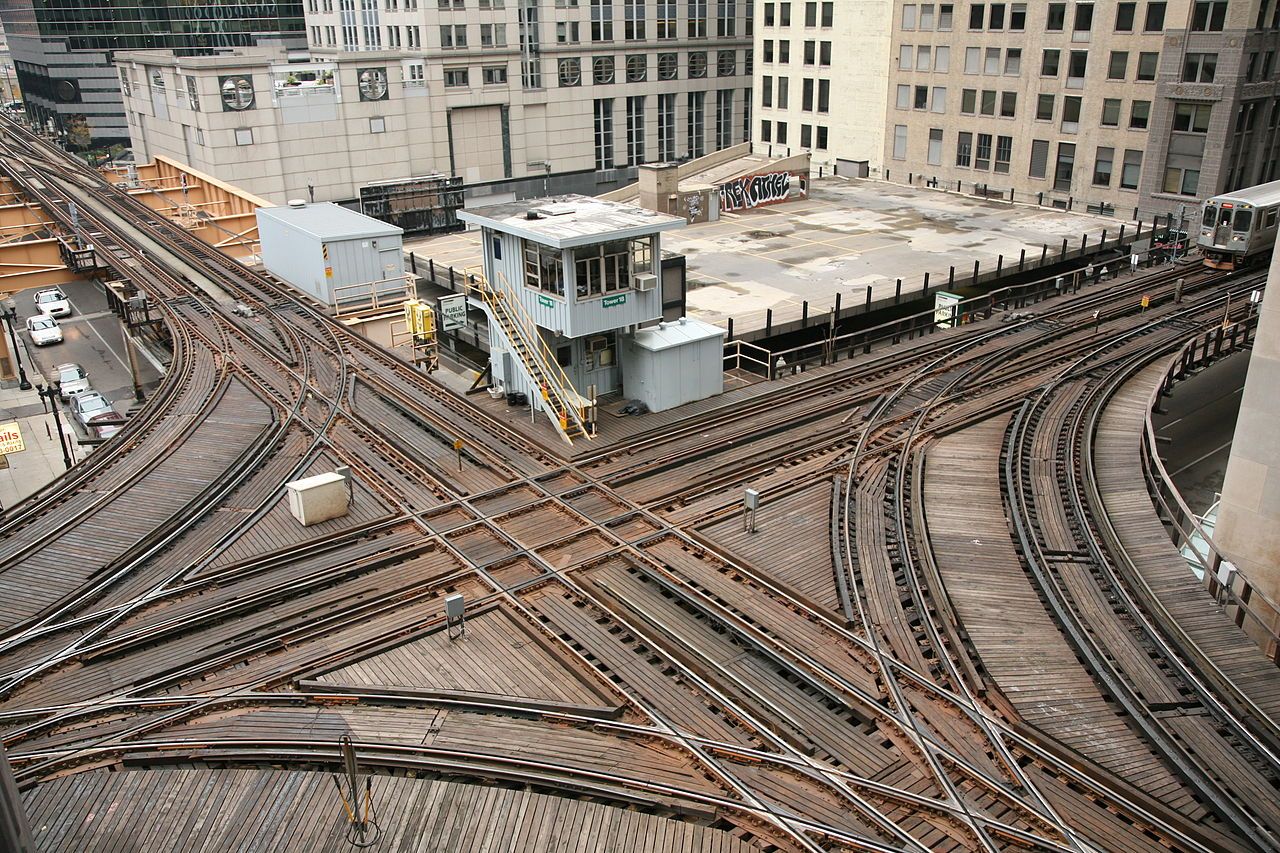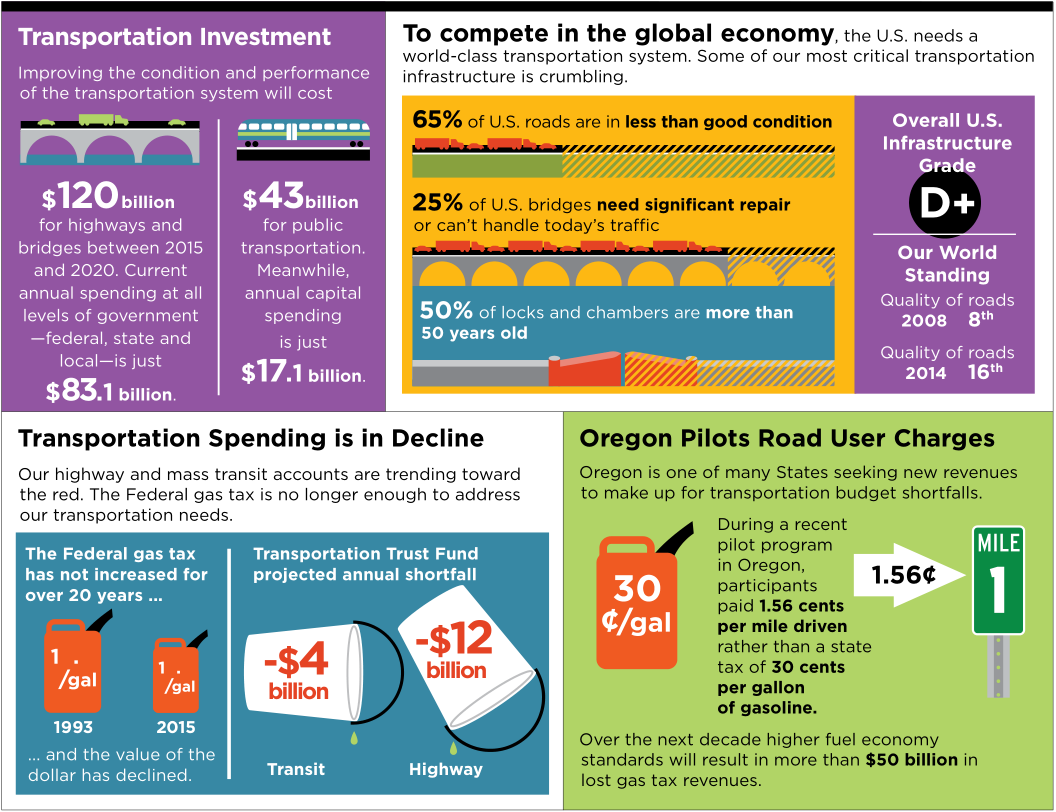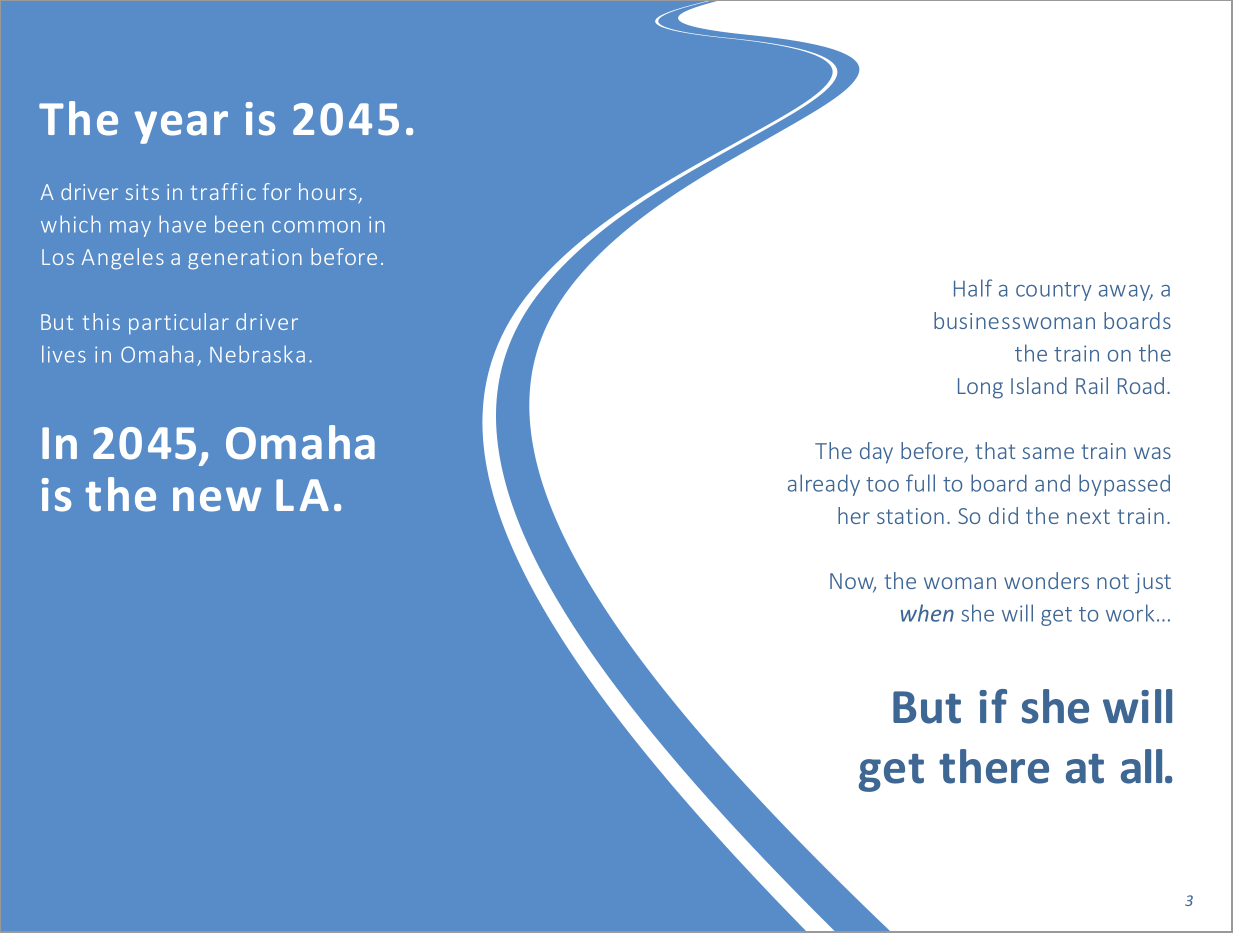The Blue Paper - DoT's Latest Plea

The U.S. Department of Transportation (DoT) recently released a document they called The Blue Paper. The name is supposed to say this is not a simple blueprint for the future of US transit or a whitepaper containing the technical details of their models and predictions. Instead, it is more of a plea for help. According to the blue paper, government spending on transport infrastructure is decreasing since the gas tax has remained constant for 20 years now despite inflation and improving fuel economy in vehicles. The slide below from the paper sums up the issue reasonably well.

Since these numbers are reasonably difficult to interpret as anything but "a lot of money", The Blue Paper starts off with a quick projection of an apocalyptic future. The use of small text with the 'shocking' predictions in bold may be a little heavy handed, but with current projections and budget plans they are not necessarily pure terrifying science fiction.
It continues on to say that buses in Asia will get their power wirelessly and that driverless cars will almost eliminate vehicle accidents in Europe. While the first situation is a bit ambitious, as using induction to transmit electricity wirelessly is pretty inefficient in its current form, powering buses using electricity is reasonably common. For example, The Boston T already has buses that can hook up to the electricity through overhanging power lines. Furthermore, regulators seem to be excited about driverless cars, which means that technology will most likely develop in the U.S. with strong investment from companies like Google and Uber.
The paper has many other slides portraying disaster with the only hope being to increase the DoT's budget. So the real question many people (in the United States at least) ask is why not the private market? As far as infrastructure for big business is concerned, the investment could be more than adequate just like it was back in the mid 1800s with the Philadelphia Railroad Company where rail connected industrial regions together. However, industries with large natural barriers to entry tend to result in oligopolies which lead to higher prices for consumers. Furthermore, this infrastructure is not going to provide for people living in smaller towns or cities where old industries have come and gone. One common argument is that people should just move to an area with adequate infrastructure. Forgetting the cultural implications of this, my favorite counterpoint was made in the comments section of an Ars Technica article talking about the lack of broadband access in rural areas. Paraphrasing, it started with "If you live on a farm and not in a city, you should just move to a city where there is plenty of internet competition." The responder quipped "Well then, if you do not live by a farm, you should not be able to get food."
Moving away from the welfare distribution standpoint since that tends to be a bit controversial, it also makes sense financially according to the DoT's paper. It will cost $120 billion annually to keep bridges and highways in good repair between 2015 and 2020 and $43 billion for public transportation. Just congestion costs will reach about $100 billion, much less other costs that will start arise when bridges have to close. Once again though, these are big numbers that are not particularly easy to process.
The problem is every arm of the federal government wants more money. I am a big proponent of NASA spending, education spending, telecom infrastructure spending, etc. Not only that, but those agencies make totally valid claims when spreading their own tales about impending disasters and all require massive investments. While throwing money at problems is usually not an effective solution, my main argument for listening to the DoT is that this is one case where more money is simply a necessity. Infrastructure is an investment that over the long run should pay off in higher tax revenue due to increases in economic activity. Throwing money at a problem rarely fixes it, but with infrastructure and proper planning, the DoT should be able to plan very effectively.
